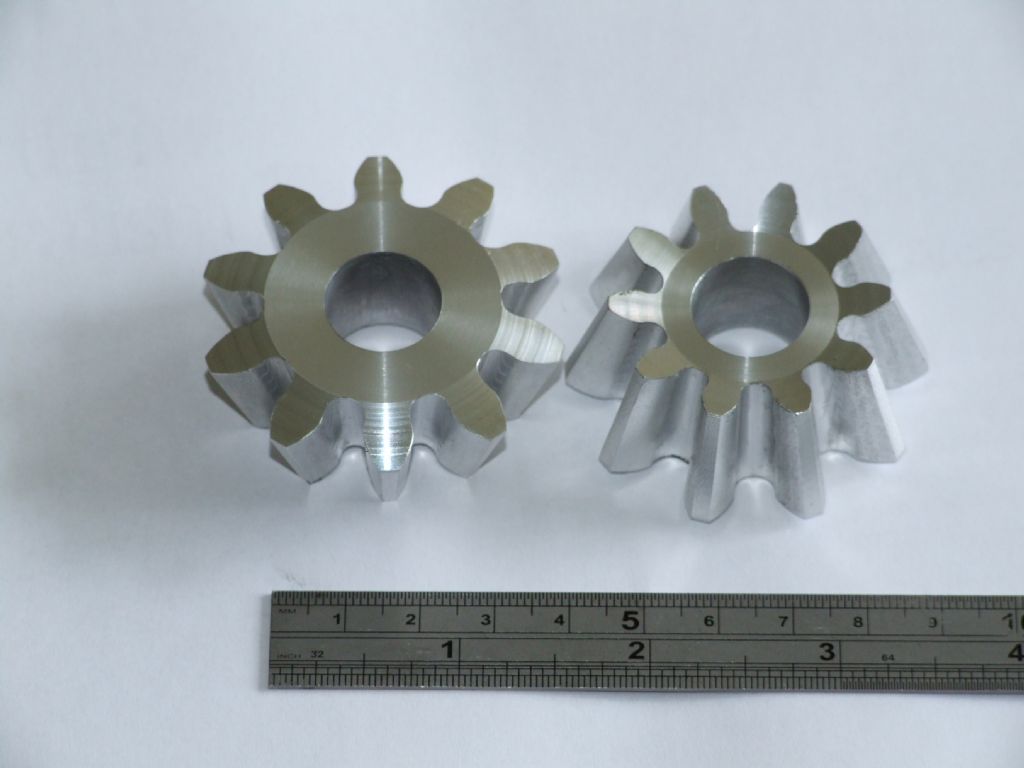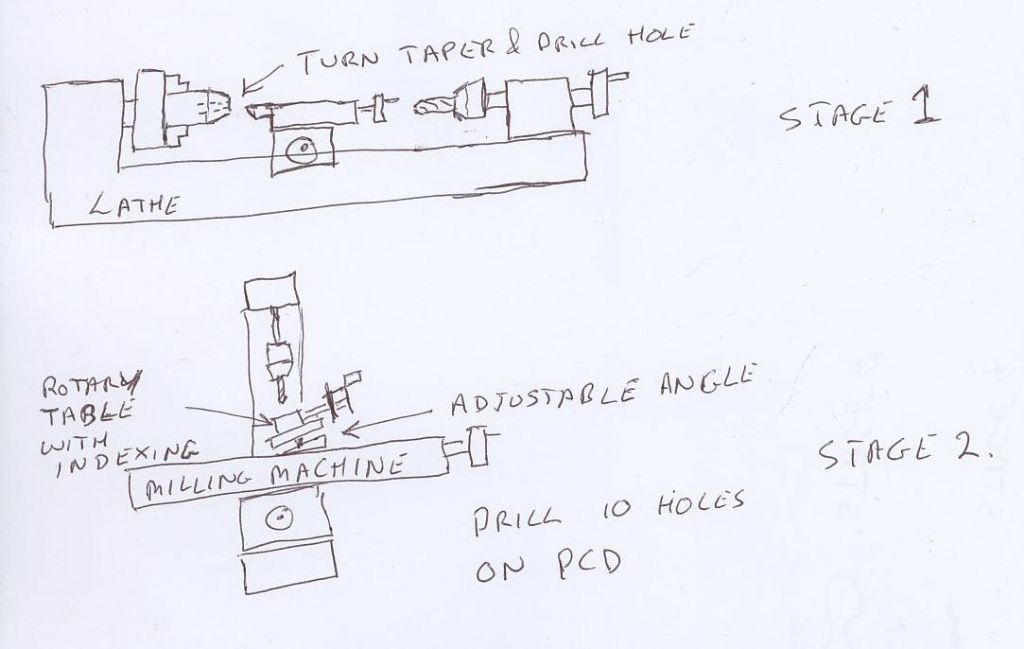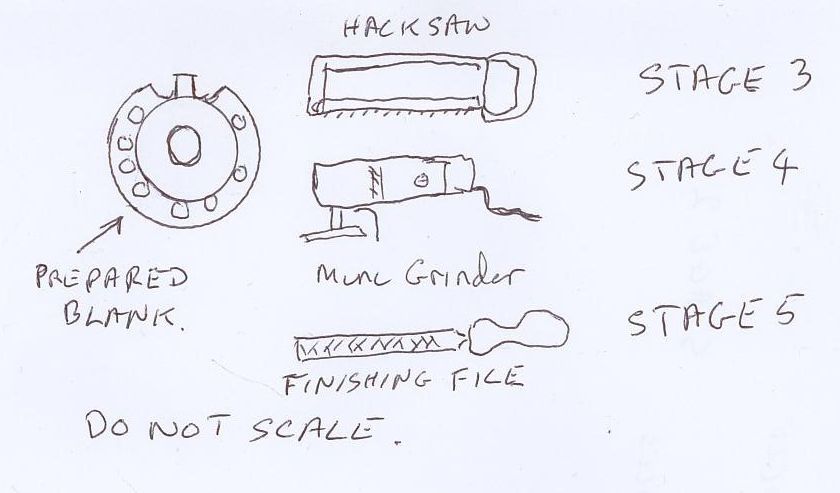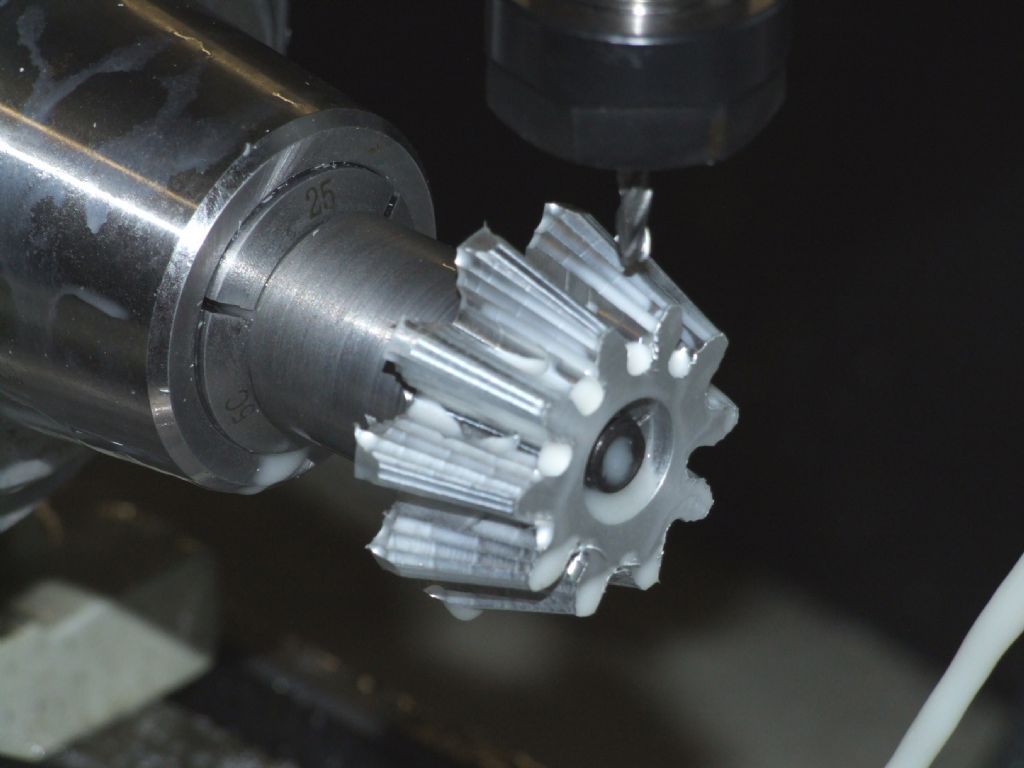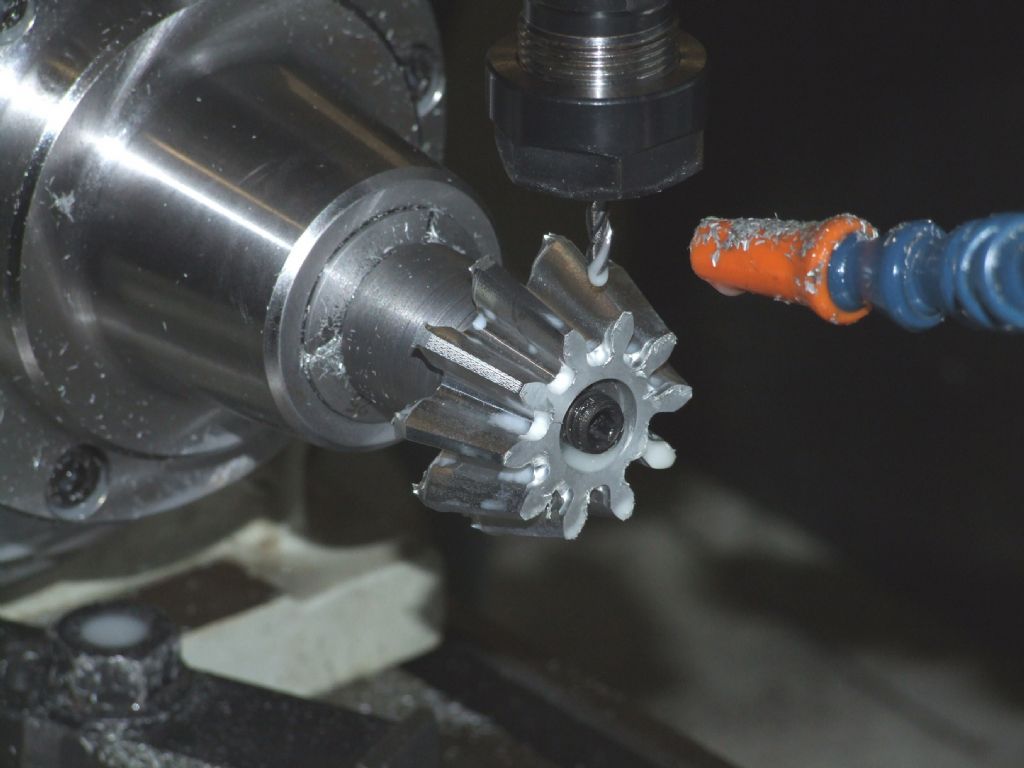So, the weather is not good, we’ve got alto-stratus and some alto-cu here, otherwise known as crap off the North Sea, so flying has been postponed.
Thanks to everyone for the replies. Rather than one long post I’ll do several shorter posts. First a few general notes.
The mating crown wheel will be 36 teeth, so John S wasn’t far out. These are true bevel gears, so they cannot be cut on a horizontal mill with a dividing head. I’ll discuss this in another post, as there are some things I would like to clarify on the cutting of bevel gears on a manual mill.
Congratulations to WALLACE for getting the answer correct in the first reply, CNC all the way.
JasonB is also correct, these are for the differential on a 4″ scale SCC Burrell. I admit that casting was the one solution I hadn’t thought of. I know that full size engines often used ‘as cast’ gears in the differential, presumably mainly for cost reasons. Since the full size engines often used only 6 or 8 teeth on the bevel pinions they would have also been heavily undercut and hence difficult to produce by machining. It would have been an interesting exercise to make the patterns and have the gears cast, but of course you still have the problem of how to make the pattern, chicken and egg? I’d use the CNC mill to make the pattern; it’s a couple of keystrokes in the CAD program to alter the scaling of the solid model to allow for shrinkage, about 1/8″ per foot or 1% for cast iron.
Donald, yes you could use a rat tailed file. But the radius at the bottom of the small end is just over 2mm, so may I suggest that a mouse tail file would be more appropriate. You’d probably have to ask for a wee, sleekit, cow’rin, tim’rous beastie file though.
On books, I do have Ivan Laws book, it’s good as far as it goes, but, it seems rather weak on the theory. I haven’t heard of the Marshall book, I’ll have to have a look. I normally use ‘Gear Design Simplified’ from Industrial Press, Machinery’s Handbook and the internet for design information.
Regards,
Andrew
Edited By Andrew Johnston on 04/06/2011 11:19:44
Sub Mandrel.



